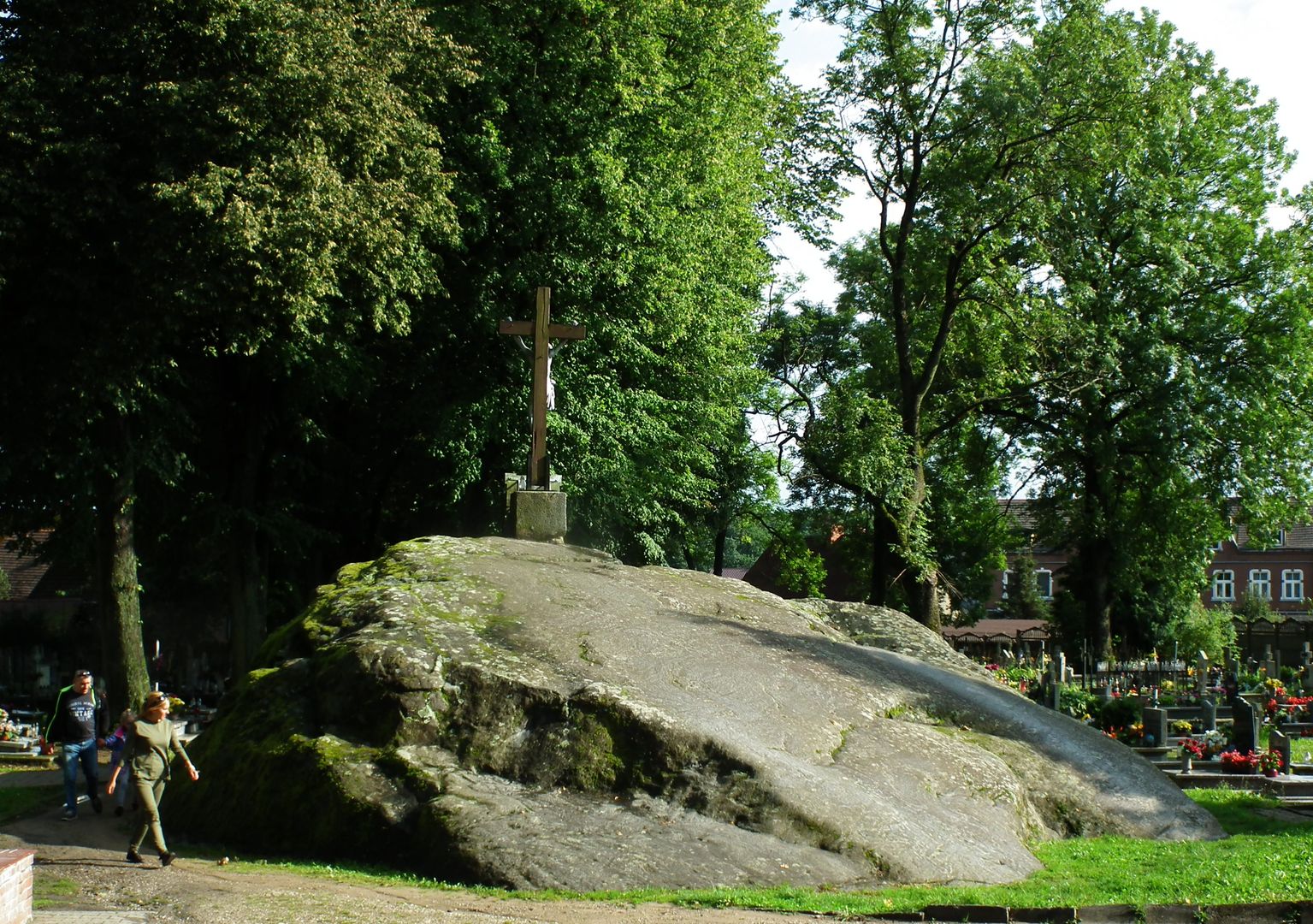Triglav
6.69

Overview
Trygław is the largest glacial erratic boulder in Poland, located in Tychowo, within the Tychowo municipality of Białogard County. Its impressive dimensions include a circumference of approximately 50 meters, a length of 16 meters, a width of 11 meters, and a height of 7.8 meters, with 4 meters of it buried underground. Composed of dark-gray gneiss, the boulder was transported from Scandinavia by an ice sheet during the last glaciation, making it a fascinating example of subglacial geology. Visible on its surface are marks left by its dragging movement under the ice, underscoring its natural origin.
Local legends are associated with the boulder, including tales of a golden statue of the god Triglav buried beneath it, as well as an anecdote about the Dukes of Western Pomerania who supposedly drove a horse-drawn carriage with four horses onto the stone. In 1874, the German community erected a wooden cross with a figure of the crucified Christ, crafted by sculptor Wilhelm Theodor Achtermann, on top of Trygław. The figure was cast at a Berlin iron foundry, and a plaque with a quatrain, funded by Hans Hugo von Kleist-Retzow, was placed beneath the cross.
Today, Trygław is the site of an annual All Saints' Day mass and has been protected as a natural monument since 1954. Additionally, since 1996, its image has been featured on the coat of arms of Tychowo, highlighting its cultural and historical significance in the region.
Location
2025 Wizytor | All Rights Reserved